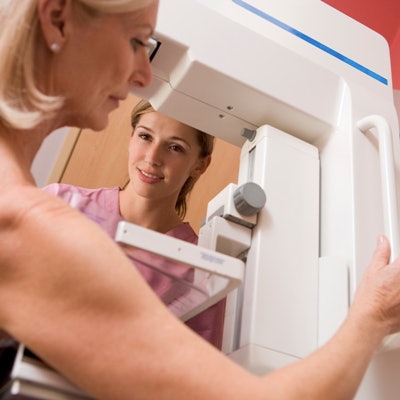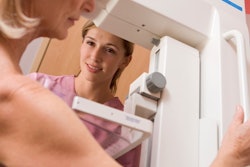
A breast cancer screening study of more than 400,000 Italian women found that screening attendance is associated with a reduction of nearly 30% for cancers stage II or higher. However, the authors suspect the new data probably won't sway screening opponents.
Women in regional Italian screening programs were followed for breast cancer incidence over 13 years. The investigators obtained individual data on exposure to screening and correlated this with total and stage-specific breast cancer incidence. Socioeconomic status and prescreening incidence data were used to assess the presence of self-selection bias. Breast cancer screening does indeed reduce breast cancer incidence, according to corresponding author Dr. Marco Zappa, medical director of clinical epidemiology at ISPO Cancer Research and Prevention Institute in Florence, Italy, and colleagues.
 Dr. Marco Zappa.
Dr. Marco Zappa."Although the cohort was large and the method robust, we do not think that our study will convince the opponents of mammography screening programs," he wrote in an email to AuntMinnieEurope.com. "Frankly speaking, it seems to us that the debate on this issue is more and more ideological."
Not so 'spurious'
As part of the IMPACT project, an Italian national scheme to evaluate the results of regional mammography screening programs, Zappa and colleagues investigated breast cancer screening. Previous IMPACT investigations revealed a 25% decrease in breast cancer mortality and in a temporal correlation study, a 20% to 30% decrease in the incidence of tumors T2 or greater in the target population.
To confirm that the observed association was not a spurious one, the authors conducted a prospective cohort study of 413,447 Italian women who were invited to participate in regional screening programs. They determined the women's exposure to screening using individual data and correlated it with total and stage-specific breast cancer incidence (European Journal of Cancer, April 2017, Vol. 75, pp. 109-116).
Overall, screening attendance was associated with a 10% excess risk of in situ and invasive breast cancer, which dropped to 5% for invasive cancers only. There were significant reductions for specific cancer stages -- a 39% reduction for T2 or larger, 19% for node positives, and 28% for stage II and higher.
The team also noted an increase (50%) in T1 breast cancer incidence for tumors up to 10 mm in size accompanied by an equal change for node-negative breast cancer. A reduction of almost 40% in breast cancer incidence occurred for tumors T2 or greater, and the extent of the decrease was greater with increasing tumor size.
The largest drop was in the incidence of stage IV breast cancer, whereas the rates of stage IIA breast cancer were similar between attenders and nonattenders, the authors added.
"The latter finding was probably due to the fact that stage IIA breast cancer is intermediate between early cancers (increasing incidence) and the most advanced cancers (decreasing incidence)," they wrote."Stage IIA breast cancers detected by screening would lead to an incidence increase, but this effect is counterbalanced by those stage IIA breast cancers that are prevented by detection at an earlier stage."
The data also demonstrated a 17% reduction of large-sized tumors among all invited women, regardless of the exposure to screening, compared with prescreening incidence rates.
"This figure can be considered an estimate of the impact of organized mammography screening on the whole population after 13 years of follow-up," they wrote. Therefore, the presence of self-selection bias is limited.
An unexpected finding was the small excess incidence in the screened group, Zappa wrote in his email.
"Our interest was focused on the comparison of the frequency of advanced-stage cancers between the two groups [women who responded to screening invitations and those who did not]," he wrote. "The estimate of overdiagnosis was beyond the scope of the study. However, the excess incidence of breast cancers in the screened group was rather small, that is, 10% including ductal carcinoma in situ (DCIS) and 5% excluding DCIS. This means that in a real-world situation, a screening program is associated with a small amount of overdiagnosis."
Despite the overdiagnosis, the authors concluded that their study supports the effectiveness of screening in reducing the risk of advanced-stage breast cancer.



















